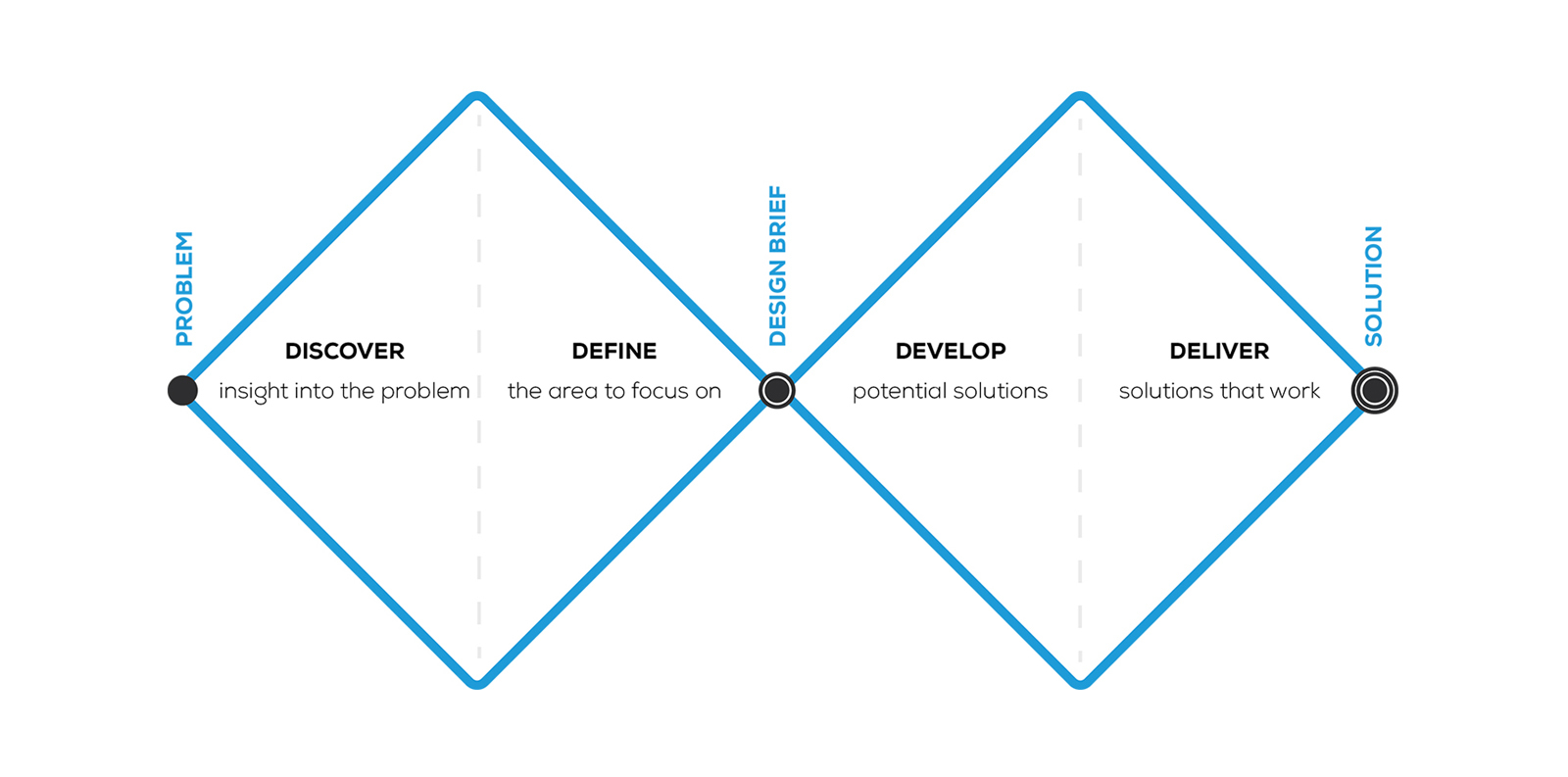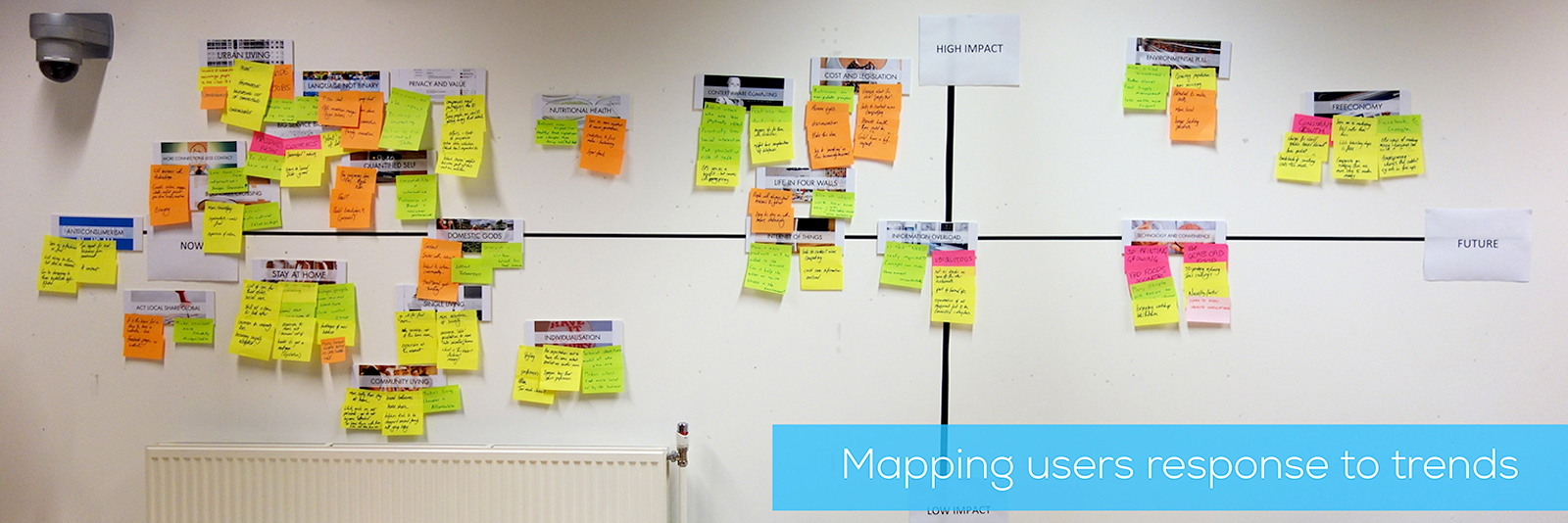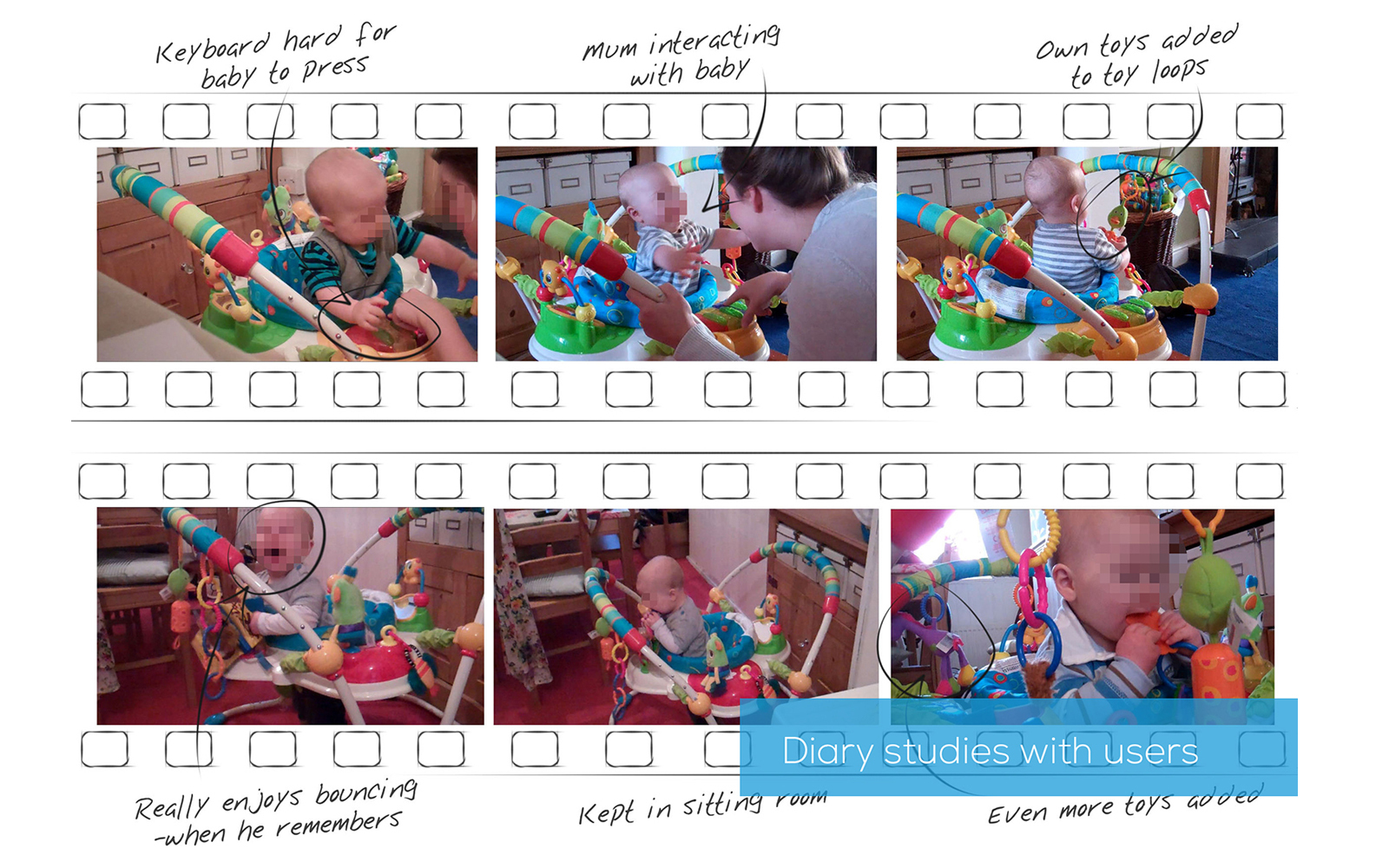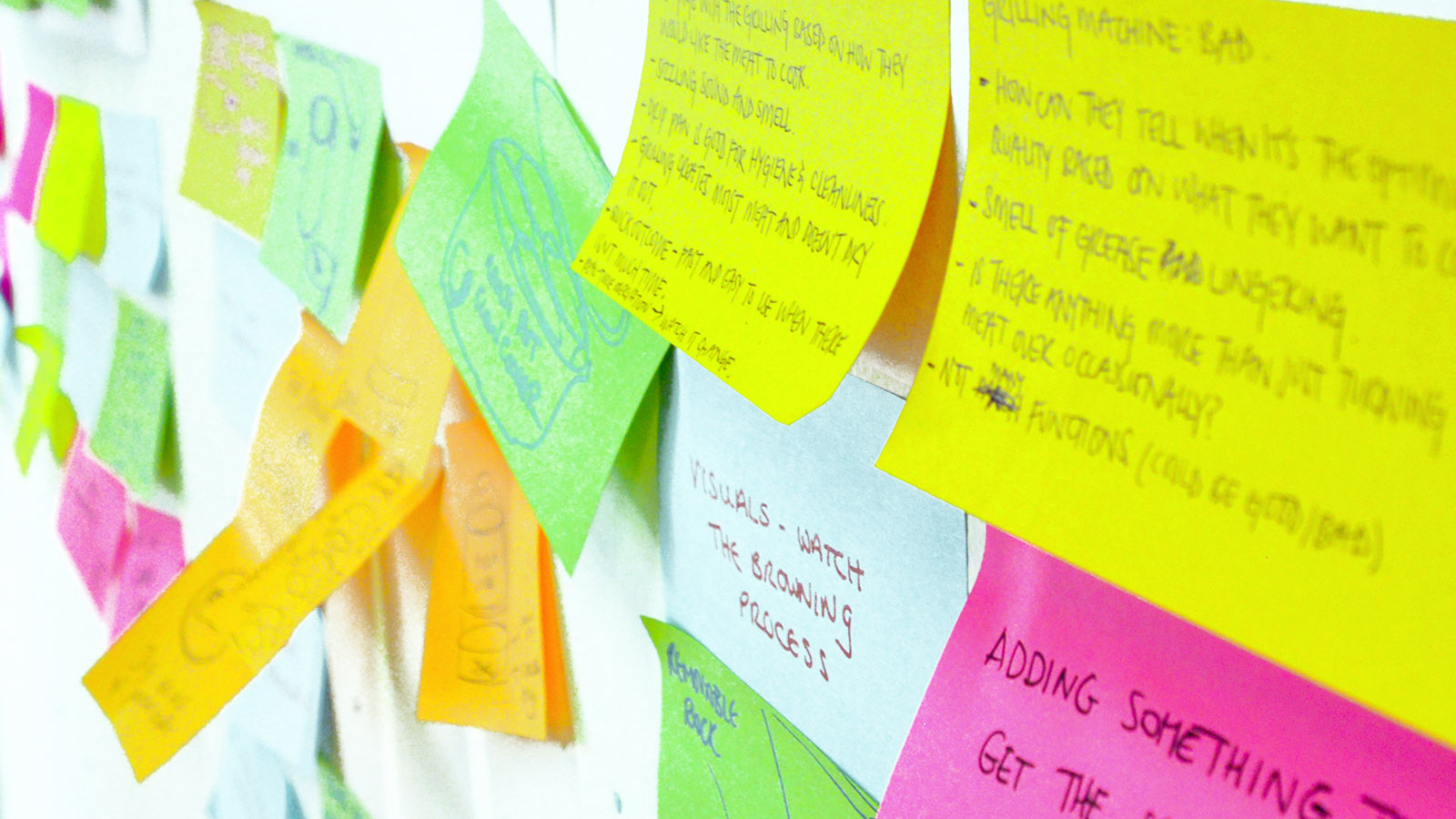User Research to Inform Strategy
“Design Thinking” is now becoming broadly accepted as a creative problem-solving methodology that can be applied to fields far beyond those traditionally considered design. The “design diamond”, demonstrates the design thinking as a linear process which has both divergent, exploration phases and convergent, decision-making phases which specifically facilitate the understanding of the approach for business and management practitioners. In reality, design researchers rarely take an approach that is as genuinely linear as the double diamond may have you believe, however it does not change the core sentiment of ‘design thinking’ as a problem-solving strategy, having empathy with your stakeholders will result in better solutions.

I like to refer to the job that I do as part of the user-centered Design team at PDR as ‘solving complex problems’. We use a mix of market and user research approaches, analytical skills and thinking, and ideation approaches to come up with innovative solutions to complex problems. More and more the problems we’re being approached about are what we would class as ‘strategic’. Rather than the specific and present “design a product/service that…”, we’re being confronted with vague and future based problems “what should we do in 5/10/20 years time?”.
What role does User Research have in Strategy Design?
Trend and market analysis alongside gathering an understanding future technologies and contexts through interviews with experts (outside your usual scope) and reviewing existing literature will give an insight into potential futures within which your business must function. However, this is not enough for most to develop a coherent strategy. Questions remain around what opportunities do these potential futures afford, where is your business best placed within this future, and how do we get to this point?
I believe that this is where User Research plays a vital role in defining, or rather designing, strategy, by allowing us to:
Understanding the opportunities that future scenarios afford.
Help us plan the path.
Understanding Future Opportunities
After gaining an understanding of potential futures from a variety of (mostly) desk-based research methods, User Research can help us understand our role in these futures. Some practitioners would argue that this is not the case, many perceive User Research to only afford incremental improvements, essentially based on the assumption that users can only feedback on what they know. However, it is not the user’s feedback we want in this scenario, it is an understanding of their values and desires. Whilst product interactions will change over time, when you drill deep into user needs and values these are rarely constrained to a technology or a timeline.

To understand user needs and values we must take a more creative approach to both the research itself and the analysis of it. User trials and specified metrics aren’t of any use here. Instead, methods such as ethnography, cultural probes and design games will provide a much deeper insight into the users values. Liz Sanders excellent book “The Convivial Toolbox” is a great introduction to both the methods and the understanding of these deeper levels of human behaviour.
Once we understand the user’s values, we can map these onto the potential futures and their subcomponents: technology, environments, and usage contexts. All in all, this will inform an end-goal, a strategy direction and it will move us from ‘potential futures’ to a designed ‘proposed future’.
Understanding the Present
As any high-achiever will tell you, a goal is only useful if we have a good understanding of the starting point. Strategy Design should be more than just a statement of intent or ‘proposed future’, and instead should be a defined plan to achieve this goal. An understanding of the present day is vital to identify the missing components and required developments to move us from the present to the future.
The needs and values previously discussed can create a framework for the investigation of the present. User Research methods such as contextual inquiries, interviews, and diaries can then be used to understand how the current state of play allows or prevents, the user to actualise their needs and values. This defines the present, the starting point of our journey and we can then use techniques such as backcasting to help us clarify the steps required to move along this path.

This path will inevitably be challenging. If there are no challenges then there is no reason for it to be a ‘proposed future’ rather than a ‘proposed present’! This is where traditional design skills of ideation and concept generation can help provide innovations and solutions to these challenges. These concepts will of course be informed by all the research that has come before it: a deep understanding of the user and the secondary research around future technologies, environments and usage contexts.
Summary: Designing a Strategy
A strategy is a path to achieve a goal. This path must be considered and designed just as the touchpoints along that path must be considered and designed. User Research plays a vital role alongside Market Research and Futures Studies to help define the strategy.
At PDR, I am lucky to work with such a wide range of people with varying specialisms meaning that we can cover the whole scope of research and analysis skills required to design strategy, and the ideation and conceptualisation skills to propose solutions to the challenges you hit along the way.

